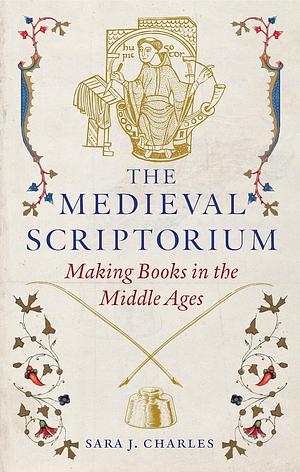
The Medieval Scriptorium: Making Books in the Middle Ages
by Sara J. Charles
Genres: History, Non-fictionPages: 352
Rating:

Synopsis:Illuminated with illustrations, an exploration of medieval manuscript production that offers insight into both the early history of the book and life in the Middle Ages.
This book takes the reader on an immersive journey through medieval manuscript production in the Latin Christian world. Each chapter opens with a lively vignette by a medieval narrator—including a parchment maker, scribe, and illuminator—introducing various aspects of manuscript production. Sara J. Charles poses the question “What actually is a scriptorium?” and explores the development of the medieval scriptorium from its early Christian beginnings through to its eventual decline and the growth of the printing press.
With the written word at the very heart of the Christian monastic movement, we see the immense amount of labor, planning, and networks needed to produce each manuscript. By tapping into these processes and procedures, The Medieval Scriptorium helps us to experience medieval life through the lens of a manuscript maker.
Sara J. Charles’ The Medieval Scriptorium is an in-depth look at book production in the Middle Ages — and not just the writing of books in a scriptorium, but also the process of making the parchment and bindings, the ink, the pigments, doing the illuminations. The most surprising fact for me was that actually, we don’t really know what “a scriptorium” was like, and we’re not even sure they existed: the evidence suggests they probably weren’t universal, at the very least, and that instead probably in many institutions the work was done in special cubicles in the cloisters.
Each chapter opens with a bit of fiction, which I found a bit unnecessary: they do meticulously demonstrate the conclusions of each chapter, bringing them to life, and I think some readers might like them a lot, I just… prefer my non-fiction to be non-fiction.
I’d say most of the information here wasn’t surprising to me, but there are some corners where I had never read about it in so much detail before, a few facts here and there that came as surprises. It’s a nicely presented book, with in-line colour illustrations (I seem to be seeing this more lately, which is welcome), detailed references (hurrah!) and an index. The facts line up with what I know from studying English lit, so all in all, recommended!
Rating: 4/5 (“really liked it”)

I’m fascinated by book production, especially older methods. I could see myself enjoying this, despite the fact that I don’t read non fiction
I definitely enjoyed it, and I don’t think it’s too dry. The fictionalised “portraits” at the start of each chapter help as well — not my thing, but they do bring it to life.